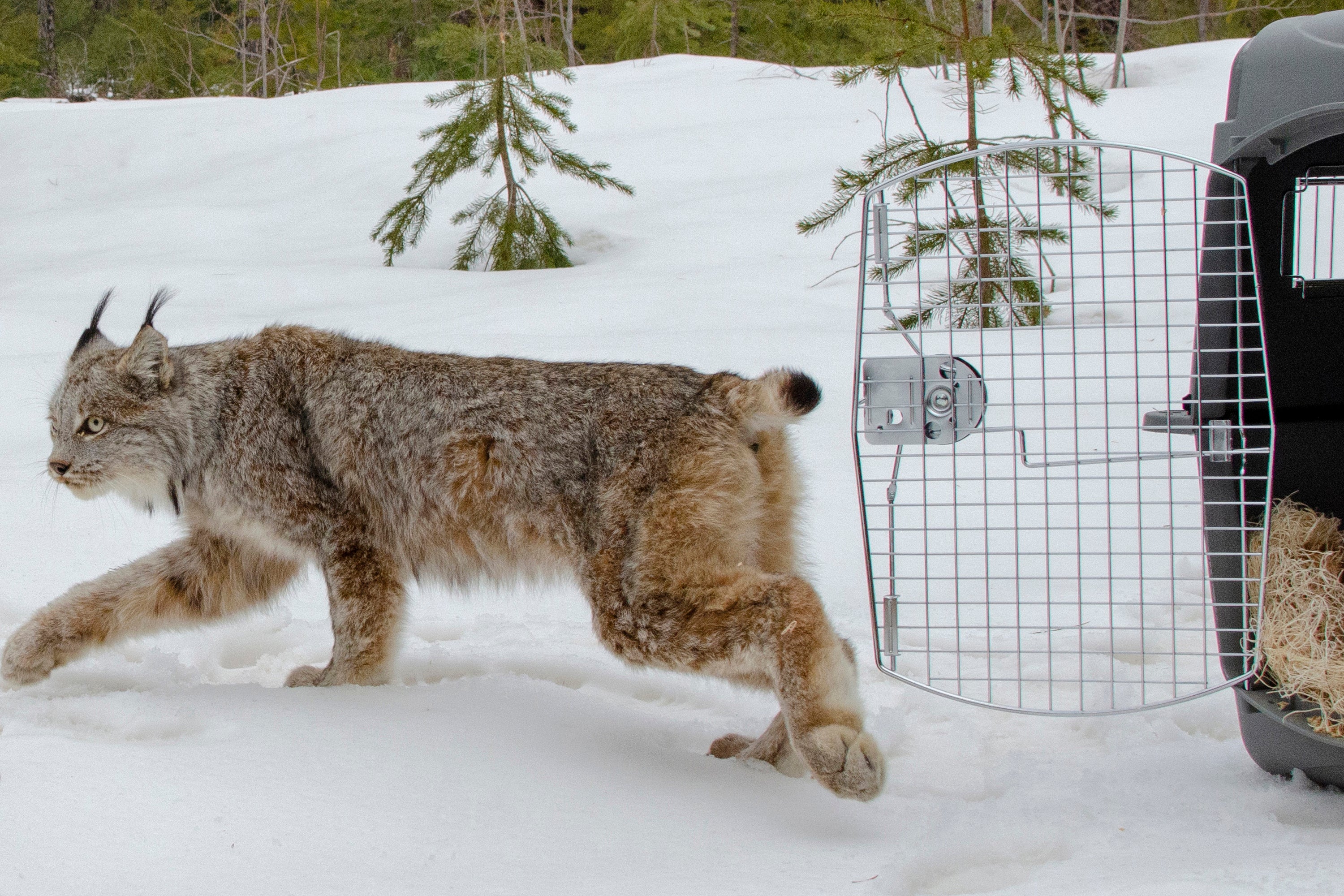Canada lynx protections deal sealed by US, environmentalists
U.S. wildlife officials have agreed to craft a new habitat plan for the rare, snow-loving Canada lynx that could include more land in Colorado and other western states where they would be protected

Your support helps us to tell the story
From reproductive rights to climate change to Big Tech, The Independent is on the ground when the story is developing. Whether it's investigating the financials of Elon Musk's pro-Trump PAC or producing our latest documentary, 'The A Word', which shines a light on the American women fighting for reproductive rights, we know how important it is to parse out the facts from the messaging.
At such a critical moment in US history, we need reporters on the ground. Your donation allows us to keep sending journalists to speak to both sides of the story.
The Independent is trusted by Americans across the entire political spectrum. And unlike many other quality news outlets, we choose not to lock Americans out of our reporting and analysis with paywalls. We believe quality journalism should be available to everyone, paid for by those who can afford it.
Your support makes all the difference.U.S. wildlife officials have agreed to craft a new habitat plan for the snow-loving Canada lynx that could include more land in Colorado and other western states where the rare animals would be protected, according to a legal agreement made public Tuesday.
The U.S. Fish and Wildlife Service faces a 2024 deadline to draft the new plan for the wild cats after settling a legal challenge from two environmental groups — Wild Earth Guardians and Wilderness Workshop. U.S. District Judge Donald Christensen issued an order late Monday approving the settlement.
The groups had sued to enforce a prior court ruling from Christensen that said federal officials wrongly excluded areas of Colorado, Montana and Idaho when they designated almost 40,000 square miles (104,000 square kilometers) in 2014 as critical for the lynx's long-term survival.
On land designated as critical for the survival of species, federal agencies are required to consult with wildlife officials before taking or allowing any activities that could destroy or alter the habitats of the species. Those consultations can potentially lead to restrictions of logging in federal forests or limitations on dirt roads used for recreation.
The judge cited the presence of a reproducing lynx population in the southern Rocky Mountains of Colorado. Agency officials had earlier concluded that Colorado and adjacent areas of Wyoming and New Mexico were “not essential” for the recovery of the species, pointing in part to low population densities of snowshoe hares that lynx eat.
Lynx are elusive, forest-dwelling animals. There is no reliable population estimate but several hundred are believed to roam parts of the U.S. Rocky Mountains.
The animals also are found in Minnesota, Maine, Washington state and occasionally Michigan.
They were reintroduced to Colorado beginning in the late 1990s and listed as threatened under the Endangered Species Act across the contiguous U.S. in 2000.
During Donald Trump's presidency, officials said the lynx had recovered and no longer needed protection after their numbers rebounded in some areas. President Joe Biden's administration reversed course in November and agreed to keep the lynx's threatened species protections. That did not resolve the dispute over what areas they would need to survive.
“There’s a lot of really good habitat in Colorado — wilderness and really remote areas,” said attorney John Pellgren, who represented the environmental groups that reached the settlement.
But he added that those areas face increased pressure as trees in forested areas are killed by beetles, wildfires and other problems that scientists say are worsened by climate change.
Some scientists warn climate change could undo progress in lynx recovery, by melting away their snowy habitat and decreasing the availability of snowshoe hares.
U.S. government biologists in 2016 predicted some lynx populations would disappear by 2100. That was based on models predicting widespread and substantial habitat losses because of climate change.
Under Trump, officials shortened their time span for considering climate change threats, from 2100 to 2050, because of what they said were uncertainties in long-term climate models. A government assessment based on that shortened time span concluded lynx populations had increased versus historical levels in parts of Colorado and Maine.